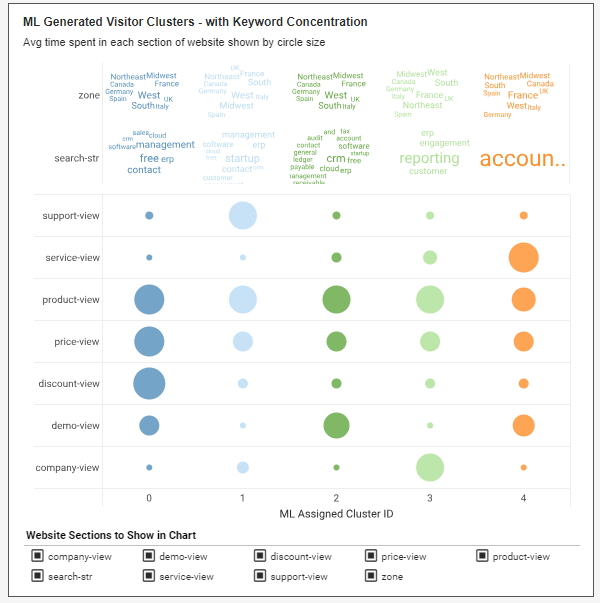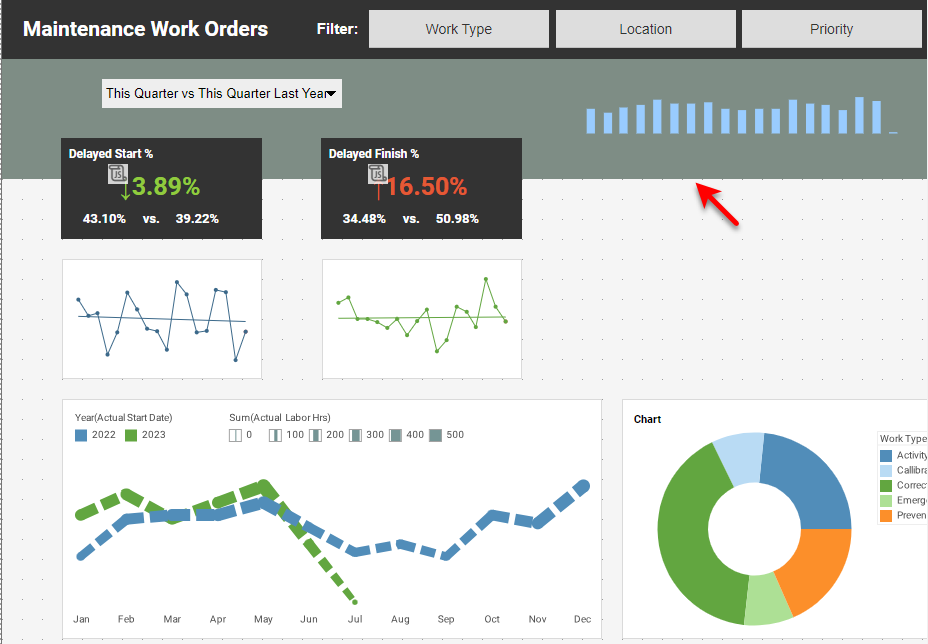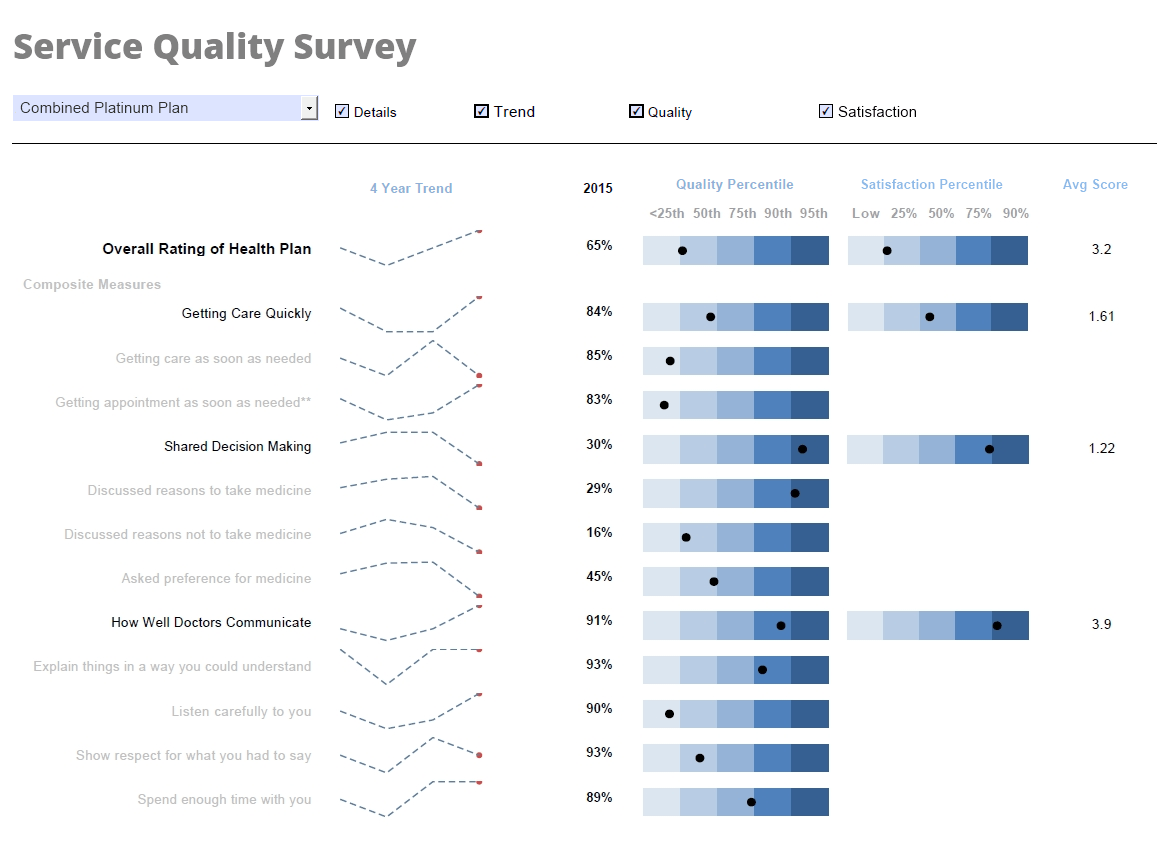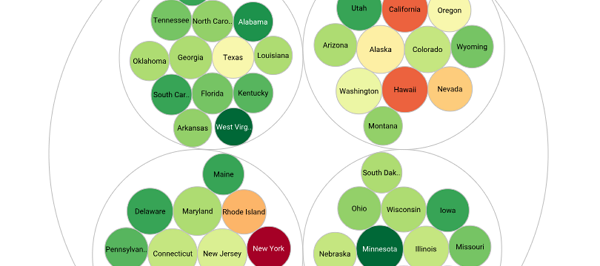Pervasive BI: Allowing Users Across an Enterprise to Explore Data
InetSoft provides an easy-to-use, web-based BI platform that enables BI to become pervasive across your organization. Providing BI to more employees diminishes the latency between the recognition of events and the implementation of subsequent actions. Access to BI facilitates the decision-making process and speeds the deployment of organizational initiatives.
InetSoft's StyleBI can seamlessly integrate data warehousing information, along with historical and real-time data from a variety of sources, into a web-based BI platform that is intuitive enough to be used by employees at all levels of your organization. Giving these employees hands-on access to a BI tool that they can actually use, removes the ambiguity of having to rely on a singly BI or IT professional for vital information.
In order to maximize the performance of a multilevel enterprise, everyone needs to have access to the information they need, when they need it. StyleBI is able to meet that need with its user-friendly interface and web-based platform.

Powerful Data Mashup and Mobile Capabilities
InetSoft's robust data mashup engine is able to merge and manipulate vast amounts of disparate data through its simplified interface. Anyone within an organization, from department heads to top executives, to suppliers and partners, can create their own data mashups, regardless of IT experience. StyleBI can access and combine virtually any data source, to create a single source of information. With this kind of convenience and usability, users across an organization can explore data relationships on their own, enabling them to make more informed decisions.
Since InetSoft's StyleBI is a web-based platform, reports and dashboards are not restricted to an on-premise desktop computer. Mobile devices such as smartphones and tablets can be used to issue pixel-perfect reports and explore interactive dashboards. The web-based platform enables everyone in an organization along with its partners to access, share, and stay current on business information and needs.
InetSoft Enables Pervasive BI
StyleBI's capacity for pervasive BI reduces the time on enterprise decision-making by:
- allowing access with feasible navigation to all affiliates
- implementing functional data management of historic and real time information
- enabling mobile devices to deploy analytical reports and engaging dashboards
- allowing the instantaneous reporting of reliable and accurate information
InetSoft's BI software aids the accomplishment of business objectives by providing enterprise-wide access to vital information in an easy-to-use, lightweight platform.

How a Diatomite Mining Company Uses StyleBI for Pervasive Business Intelligence
In the landscape of industrial sectors, diatomite mining plays a significant role in many products people use every day. Diatomite, also known as diatomaceous earth, is a naturally occurring, siliceous sedimentary rock formed from the fossilized remains of diatoms. It is used in everything from water filtration systems to agricultural pest control, industrial absorbents, and even cosmetics. Because the industry spans across so many different end-use applications, companies in this field face a particularly complex challenge when it comes to managing operations, meeting regulatory requirements, and delivering products on time. One such diatomite mining company turned to StyleBI as its pervasive business intelligence solution, recognizing the need for deeper insights and more agile decision-making in a market that demands efficiency and transparency.
Historically, the company relied on spreadsheets, departmental reports, and basic enterprise resource planning (ERP) outputs to monitor its mining operations and product shipments. While these tools served their purpose, they created silos of information, making it difficult for decision-makers to see the bigger picture. Production teams had one version of performance metrics, sales managers tracked another, and compliance officers often scrambled to compile regulatory data from multiple systems. The lack of a unified view made it difficult to forecast demand, optimize mining schedules, and ensure compliance with safety and environmental standards. These pain points were the catalyst for adopting StyleBI, a solution that could deliver pervasive business intelligence across the organization.
One of the first areas where StyleBI delivered value was in data integration. The diatomite mining company had data streaming in from geological surveys, extraction machinery, shipping logs, sales orders, and compliance audits. Each of these data sources lived in a different system, making it cumbersome and time-consuming to connect them. StyleBI’s data mashup capabilities allowed the company to integrate all of these sources into a single platform without requiring heavy IT intervention. For the first time, geologists, plant managers, and executives could look at dashboards that reflected real-time data across the entire operation. This integration broke down silos and created a unified, accurate source of truth.
From a performance management perspective, StyleBI’s pervasive approach ensured that insights were not limited to the executive team. Frontline workers, including machine operators and supervisors, could access role-specific dashboards that showed key performance indicators relevant to their daily responsibilities. For example, operators monitoring extraction equipment could track energy consumption and equipment downtime in real time, while supervisors viewed dashboards highlighting ore quality, throughput rates, and labor efficiency. This democratization of data not only improved accountability but also empowered employees at all levels to make more informed decisions. Instead of waiting for weekly reports, teams could act immediately when anomalies occurred, such as a sudden dip in production quality or unexpected delays in shipping schedules.
Another important aspect of StyleBI’s value came from its ability to handle regulatory and environmental compliance data. Diatomite mining companies must adhere to strict environmental regulations, including dust control, land reclamation, and water use monitoring. Previously, compliance officers at the company had to manually compile spreadsheets from disparate data sets and prepare reports for local authorities, which was both time-intensive and prone to errors. With StyleBI, the company created automated dashboards that pulled directly from environmental monitoring systems, ensuring accurate reporting and reducing the risk of non-compliance penalties. This not only improved efficiency but also enhanced the company’s reputation with regulators and community stakeholders.
On the business development side, StyleBI improved forecasting and sales performance. Diatomite is sold into diverse markets such as agriculture, construction, and consumer products, each with fluctuating demand patterns. StyleBI’s multidimensional analysis allowed the sales and marketing teams to segment customers by region, industry, and historical purchasing behavior. By visualizing these patterns, the company could better predict demand spikes, adjust production levels, and allocate resources accordingly. For instance, demand for agricultural-grade diatomite tends to increase seasonally, and StyleBI made it possible to anticipate and prepare for these cycles with greater accuracy.
Financially, the company experienced significant benefits from adopting StyleBI. By reducing the time spent on manual reporting, it freed up valuable staff hours, which were redirected toward strategic initiatives. The ability to identify bottlenecks in production and inefficiencies in logistics led to measurable cost savings. For example, StyleBI dashboards revealed that certain shipping routes were consistently underperforming due to delays at a particular port. Armed with this insight, the company renegotiated contracts with carriers and optimized its logistics network, resulting in faster deliveries and lower costs. These improvements not only boosted profitability but also strengthened customer satisfaction, as clients received products more reliably and on time.
Perhaps the most transformative impact of StyleBI for the diatomite mining company was cultural. The pervasive BI solution fostered a shift toward data-driven decision-making across the organization. Employees at all levels began to see data as an asset rather than a burden. By making information transparent and accessible, StyleBI encouraged collaboration across departments and created alignment around shared goals. Teams no longer argued about whose data was correct; instead, they worked together to interpret insights and drive continuous improvement.


